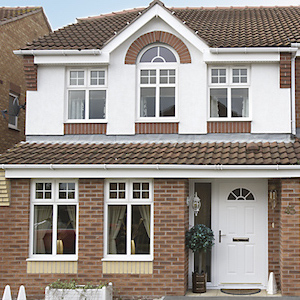
Window Replacement Company
Add a review FollowOverview
-
Founded Date September 9, 1982
-
Sectors Human Rights
-
Posted Jobs 0
-
Viewed 10
Company Description
Casement Window Repair Tools To Help You Manage Your Everyday Lifethe Only Casement Window Repair Trick Every Individual Should Be Able To
A Comprehensive Guide to Casement Window Repair
Casement windows, identified by their hinged sides that swing open and closed like a door, deal unparalleled ventilation and unobstructed views. However, like any other home function, they might ultimately need repairs due to use and tear, climate condition, or accidents. This article provides a useful summary of casement window repair, checking out typical issues, repair strategies, and upkeep pointers.

The Anatomy of a Casement Window
Before diving into repairs, it’s vital to understand the structure of a casement window. Normally, these windows consist of the following components:
| Component | Description |
|---|---|
| Frame | The outer structure that supports the window. |
| Sash | The movable part of the window that holds the glass. |
| Hinges | Enable the sash to open and close. |
| Operator | The system that facilitates the window’s movement, typically a crank. |
| Weather condition removing | Seals edges to avoid air and water leaks. |
| Glass pane | The transparent element that offers exposure. |
Understanding these parts can assist property owners determine problems more easily and carry out repairs with confidence.
Common Issues with Casement Windows
Casement windows might face a number of problems, consisting of:
- Difficulty Opening or Closing: This is typically due to misaligned hinges, harmed operators, or built up particles.
- Drafts or Water Leaks: Faulty weather condition stripping or seals can lead to drafts or unwanted water getting in the home.
- Broken Glass: Issues might emerge from impacts or severe climate condition.
- Decaying Frame or Sash: Especially common in wood frames, rot can compromise the window’s integrity.
- Rusty Hinges or Operators: Corrosion can hinder the function of the window.
Repair Techniques for Casement Windows
1. Trouble Opening or Closing
- Recognize the Cause: Check if the hinges are rusted or damaged. Examine the operator for wear.
- Change the Hinges: If the window is misaligned, tightening up or realigning the hinges might fix the issue.
- Oil Components: Use a silicone spray or graphite lubricant on hinges and operators to decrease friction.
2. Attending To Drafts or Water Leaks
- Inspect Weather Stripping: If it appears worn or damaged, it may need replacement.
- Change Weather Stripping: Remove the old stripping and tidy the frames. Measure and cut brand-new weather removing to size and apply it according to the maker’s directions.
- Examine for Caulk Gaps: Reapply caulking around the window frame if gaps are found to boost insulation.
3. Repairing Broken Glass
- Eliminate the Broken Pane: Carefully take out pieces of the damaged glass and get rid of them safely.
- Set Up New Glass: Measure the frame, cut a brand-new glass pane, and secure it using glazing points and a bead of silicone caulk or glazing substance.
4. Repairing Rotting Frame or Sash
- Identify Affected Areas: Inspect for soft areas in the wood.
- Eliminate Rot: Use a chisel to cut out the impacted wood, ensuring you reach solid product.
- Fill and Seal: Apply a wood filler to the area and sand down to make sure a smooth surface. Seal with paint or polyurethane to protect against moisture.
5. Resolving Rusty Hinges or Operators
- Get rid of the Rust: Use sandpaper or a wire brush to eliminate rust from metal parts.
- Apply Rust Inhibitor: After cleaning, use a rust-inhibiting guide before repainting or oiling.
- Change If Necessary: If the hinge or operator can not be restored, think about replacing it for optimal performance.
Maintenance Tips for Longevity
Preventative upkeep can boost the lifespan of casement windows:
- Regular Cleaning: Clean the glass and frame routinely to avoid dirt buildup.
- Lubrication: Lubricate the hinges and operators yearly to maintain smooth operation.
- Check Weather Stripping: Check weather removing each year to ensure it’s undamaged and functional.
- Periodic Painting/Staining: For wood frames, reseal or repaint every few years to protect versus moisture and decay.
Frequently Asked Questions (FAQs)
1. How typically should I check my casement windows?
It’s suggested to inspect your casement windows at least once a year, inspecting for any indications of damage, wear, or weatherization issues.

2. Can I replace the glass in a casement window myself?
Yes, replacing glass can be a DIY job if you have the right tools and products, although care needs to be taken, especially when managing glass.
3. How do I understand when to change my casement windows?
If you see considerable structural damage, consistent leaks, or inadequacies in insulation in spite of repairs, it may be time to consider total replacement.
4. Why does my casement window leakage throughout heavy rain?
Poor weather stripping, inadequate caulking, and harmed seals can result in leaks in casement windows during heavy rains. Routine upkeep and timely repair work can reduce this concern.
Repairing casement windows can seem challenging, but with an understanding of common concerns and options, property owners can maintain their windows effectively. Routine inspection and upkeep are important to making sure lasting performance. Must issues develop beyond what DIY repairs can deal with, seeking professional assistance may be the best course of action. By proactively attending to repairs and upkeep, casement windows can continue to improve any home for many years to come.

